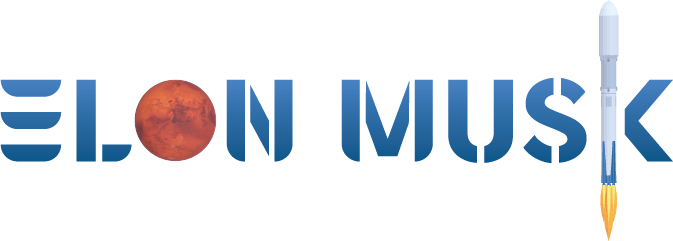
More factory problems as Elon Musk's Tesla starts producing the Model 3
- by Los Angeles Times
- Jul 03, 2017
- 0 Comments
- 0 Likes Flag 0 Of 5

(Evan Vucci / Associated Press)
Musk aims “to get as many electric cars on the road as possible” -- to make car buyers happy and to save the planet, he says, but surely also to enrich himself and reward his shareholders.
That’s why he’s not stopping with the Model S and Model X, which range in price from about $70,000 to over $120,000. The company produced about 80,000 of them last year. With the Model 3 line running at its only assembly plant, in Fremont, Calif., Tesla intends to build 500,000 cars in 2018 and, Musk said, a million in 2020.
Whether it can do so, and profitably, is a subject of great debate. The stock price is up 63% this year, and the company occasionally exceeds General Motors in market value, though many are predicting -- and in the case of short sellers, betting on -- a big fall.
The legions who side with Musk have bought into his comic-book-style take on Tesla’s manufacturing approach. He names factory robots after X-Men characters. He wants to become “the greatest manufacturer on Earth.” To Musk, the factory is “the machine that builds the machine.” He has dubbed Tesla’s version the “Alien Dreadnaught,” an allusion to an armed alien spaceship in Star Wars.
The best anybody outside the company can figure, he means a more intense focus on fast and flexible hardware and software automation.
And it may be that Tesla is making unprecedented advancements in manufacturing, but is keeping them hush for competitive advantage. Competitors will not be able to match its manufacturing software advantages, Musk has claimed. AlixPartners’ Marian said traditional automakers are struggling to speed up their software development cycles and feeling Tesla’s heat.
Advertisement
A few facts are known about Model 3 production. A Tesla engineer told the Los Angeles Times that the glass roof on the Model 3 isn’t there just to look cool. It also enables robots to reach into the car from the top, before the glass is installed, taking over duties that humans would otherwise have to perform.
The Model 3 was designed for efficient manufacturing, unlike the Model X, which was designed according to the whims of Musk, who, for example, insisted on falcon-wing doors that were difficult and costly to manufacture and led to embarrassing quality problems.
“We’ve really learned a lot of lessons, especially from the difficult Model X ramp,” Chief Technology Officer J.B. Straubel said in a recent earnings call.
Tesla pitches the Model 3 as a smaller, more affordable version of the luxury Model S. Because both cars are equipped with the same self-drive hardware, costs need to be reduced somewhere else.
Hence, early versions of the Model 3 show a spartan interior, lacking even an instrument cluster with a speedometer. There’s an iPad-like screen between the driver and the passenger, and widespread speculation that there will be a head-up display projected onto the windshield.
Tesla has dropped a few details on its cost-cutting approach: the Model S has two screens, the Model 3 will have one. The Model S is stuffed with three kilometers of wiring, the Model 3, 1.5 kilometers.
Advertisement
According to Tesla, 93% of reservation holders have no previous dealings with the company. Rebecca Lindland, a Kelley Blue Book analyst, said such early adopters tend to be risk-takers, “adaptable to the quirks of new technology.” But quirks and major problems are two different things. “These are the owners that Tesla desperately needs to evangelize the brand to the masses, spreading Model 3 love down the golden path of profitability,” she said. “It will be fascinating to see if Tesla has the delivery, ownership and service infrastructure to satisfy these early adopters.”
Production and quality are hardly the only challenges for Tesla. The company has no traditional dealer system -- which might have its advantages -- but distribution, repair and maintenance for potentially hundreds of thousands of vehicles will tax and test Tesla management.
Then there’s competition. Next year, Jaguar releases its sharp-looking I-Pace electric crossover, and Audi promises a sporty all-electric sport utility of its own. Porsche plans an electric offering the following year. And BMW will reportedly soon announce an all-electric version of its 3-series sedans, perhaps the Model 3’s most direct competition.
If all goes well for Tesla, it will beat them to the market. If Tesla can get production up to 200,000 to 300,000 cars a year at high quality, with costs under control, it could remain well ahead of the pack, consultant Marian said.
The global electric car market is bound for strong growth, he believes, and “Tesla is fully vested in electric vehicles. This helps them a lot.”
Tesla is also far ahead of competitors in over-the-air software, which can regularly and automatically upgrade electronic systems with no trip to the dealer. “That’s a huge competitive advantage,” Marian said. Other automakers “are trying to catch up, but they’re many years late.”
Advertisement
Still, if Tesla can’t produce the Model 3 at high volume with high quality, that won’t matter, especially if buyers have other luxury electric cars to pick from.
Acknowledging the risk, Musk tweeted again Monday afternoon, thanking those who own or have ordered a Tesla. “It matters to us that you took a risk on a new car company,” he said. “We won’t forget.”
Wanted to say thanks to all that own or ordered a Tesla. It matters to us that you took a risk on a new car company. We won't forget.
Please first to comment
Related Post
Stay Connected
Tweets by elonmuskTo get the latest tweets please make sure you are logged in on X on this browser.
Sponsored
Popular Post
Sam Altman's OpenAI Takes On Elon Musk's Grok in AI Chess Tournament Final - Who Won?
28 ViewsAug 09 ,2025






 Energy
Energy


















